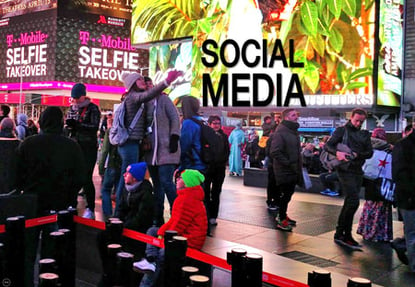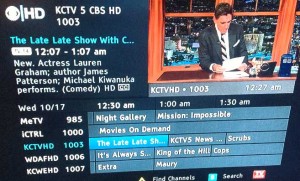Southwest Airlines Communication Specialist Laurel Moffat spoke on the airline's successful social media strategy at a January 25 Kansas City American Marketing Association lunch event. While the presentation was overly heavy on how many fans and followers Southwest Airlines has, underneath, there were many beneficial insights and lessons only a brand experienced in social media can provide. The great thing was Laurel's social media lessons apply to smaller organizations as well:
Big or Small, "Listen and Personalize" Is Fundamental
Laurel's recommendation was "listen first," which is a fundamental lesson for any organization. Listening provides an understanding of content that's meaningful and appropriate for your audiences. Once you get active, it's important to personalize audience experiences. Some ways Southwest does this:
- Team members handling Facebook duties sign their names to their responses.
- Southwest tries to share "real" content on topics customers are thinking about relative to flying.
- It encourages localization, with 20 local station Facebook pages covering specific Southwest airport operations groups.
Social Media Takes People, but Not as Many as You Think
Southwest Airlines is HUGE online:
- 12 million monthly visits to its website
- 1 million Twitter followers
- 1.3 million Facebook likers
- 29,000 reviewers on its Travel Guide
So how many people does it take to handle that volume of activity?
Try 5.
Yup, 5 people are in the Southwest Airlines emerging media group. The Southwest Airlines presence is monitored 24/7, including hourly check-ins during normal sleeping hours, with 2 people typically trading off responsibilities on major outposts.
So yes, it takes people to keep a social media effort going. If 5 people can monitor and manage it for a multi-billion corporation though, your much smaller organization doesn't need an army to accomplish its objectives.
There Are Huge Opportunities in a Collaborative Social Media Strategy
With all the content Southwest Airlines creates to keep its presence fresh, a collaborative approach is vital. Some collaborative examples that serve as lessons for everyone else:
- There's internal collaboration: marketing creates the feel for its social media channels, and the communications team (through its emerging media group) drives content. The legal and investor relations departments are also closely involved.
- All emerging media team employees complete customer service training to ensure they are well-prepared to address customer questions and issues directly and expeditiously.
- Southwest Airlines works with outside partners as well, including Kansas City-based VML and Buddy Media.
- Southwest reaches out specifically to influencers: travel bloggers, brand fanatics, avid travelers, and importantly, employees all contribute content.
- To increase broader employee involvement, Southwest organized an internal social media conference (BlogCon) in January 2011 to bring employee contributors into Dallas for overviews and training on social media and content creation (plus receiving Southwest Airlines-logoed Flip cameras). This is in addition to sponsoring a social media club within the company.
Oh, and About that Kevin Smith Deal
Without a doubt, the customer service and social media teams have to be linked. It can be very formal, but at a minimum, the communication channels and protocols need to be set. If nothing else, the Kevin Smith meltdown emphasized that important lesson. Laurel talked about the February 2010 situation in her presentation.
During Q&A, I asked about the degree of direct interaction between people monitoring social media channels and gate agents. In the Kevin Smith case, it seemed Smith was allowed to cool his heels for some time while tweeting with increasing fervor (and furor). Laurel said gate agents do get social media training and are taught that any customer incident can blow up dramatically through social media channels.
Even Veteran Players Don’t Know What Will Get Attention
Undisputed facts:
- Southwest Airlines has been in social media since 2006 when it launched its blog.
- It stepped up into Twitter and Facebook in 2007.
- Southwest Airlines has an award-winning, significant presence.
All true, but you want to know my favorite comment of the day from Laurel?
Southwest Airlines is surprised by what videos on its YouTube site get the most views. One example? Its engine cleaning video is right near the top. For anyone continually baffled by what social media content gets viewed and shared, it's comforting to know even the big guys can be left guessing!
Social Media Doesn’t Fix Bad Brands, but It Sure Benefits Already Great Ones
More undisputed facts:
- Southwest Airlines is a strong brand.
- It got into social media before it had everything figured out (it didn't have a formal policy until the past year).
- It's had a few stumbles along the way, but it sees clear positives and high regard for its effort.
If not for Southwest being a strong brand already, getting into social media and having some stumbles could have been disastrous.
Lesson for everybody else: Fix your brand first, and then worry about fixing any inadequacies in your social media strategy.
Wrap-Up
If you were in Kansas City and didn't make it out to this event, you should be kicking yourself. Thanks to Laurel and the Kansas City American Marketing Association for making this informative presentation happen! – Mike Brown
The Brainzooming Group helps make smart organizations more successful by rapidly expanding their strategic options and creating innovative plans they can efficiently implement. Email us at brainzooming@gmail.com or call 816-509-5320 to learn how we’ve developed integrated social media strategy for other brands and can do the same for yours.



